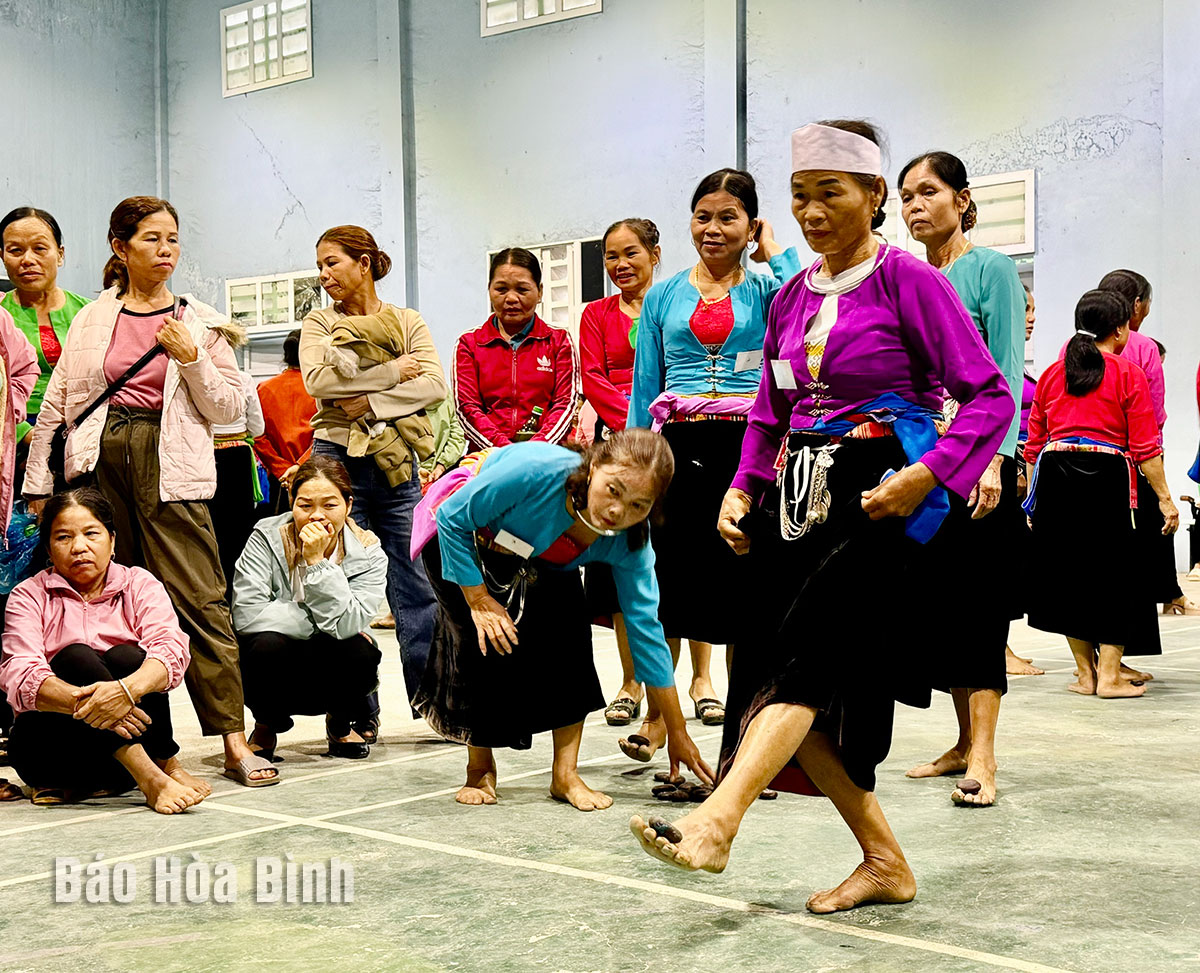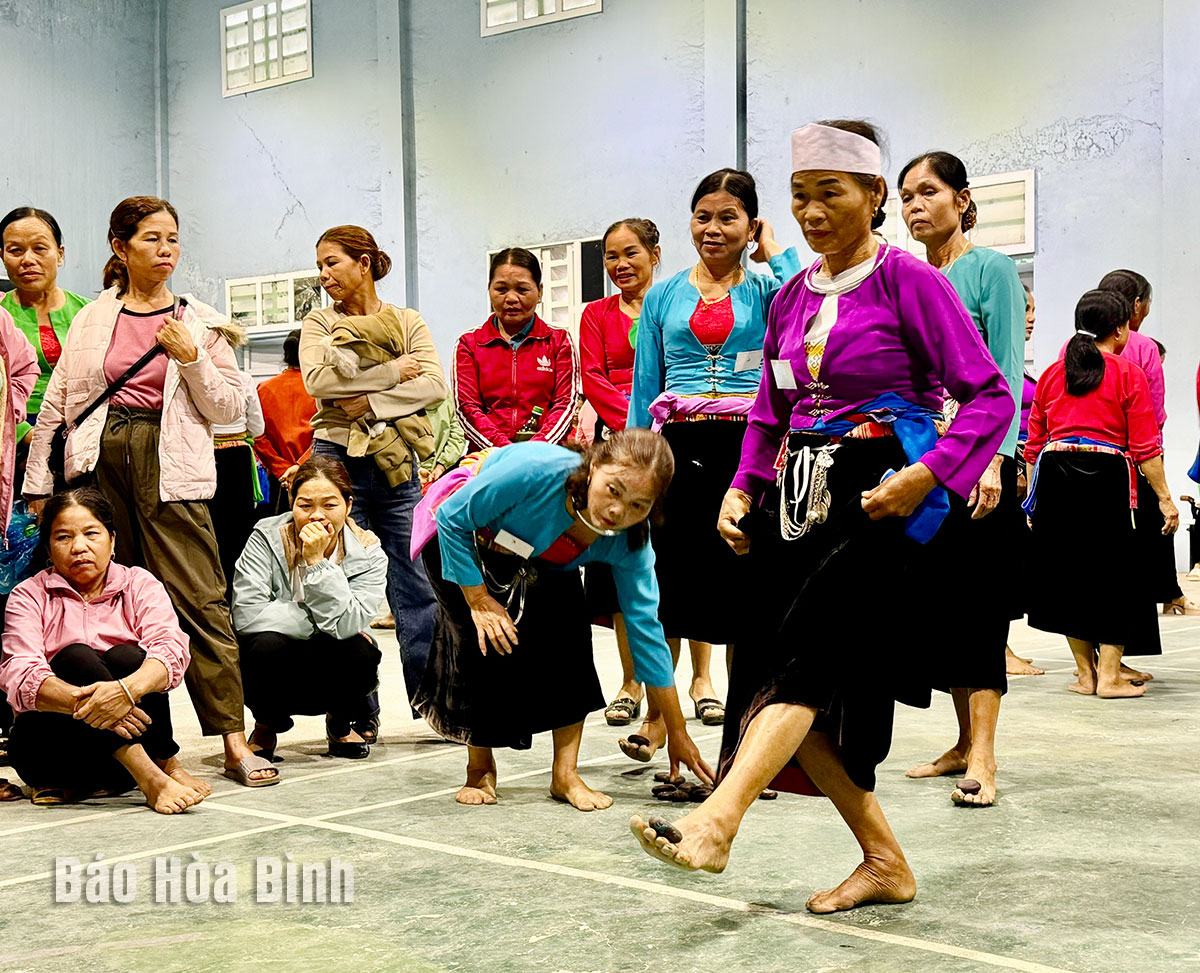
As part of Project 6 under the national target program for socio-economic development in ethnic minority and mountainous areas in 2024, Lạc Sơn District, Hoa Binh province focuses on diverse and practical activities to promote the project's goal: "Preserving and promoting the beautiful traditional cultural values of ethnic groups in conjunction with tourism development."
 Artisans experiment with traditional Muong danh mang during a training and experimentation program organized by Lạc Sơn District.
Artisans experiment with traditional Muong danh mang during a training and experimentation program organized by Lạc Sơn District.
With a budget of 3.6 billion VND from the project, Lac Sơn district allocates 1.5 billion VND to purchase equipment for cultural houses in 50 villages of ethnic minorities. An additional 600 million VND is dedicated to organizing three cultural, artistic, and sports activities, including a festival of traditional Muong folk performances, training and competitions in the traditional danh mang percussion game, and a xec bua festival with gong art performances. Furthermore, 1.5 billion VND is allocated for surveying, inventorying, collecting, and documenting heritage; preserving traditional festivals; developing policies and supporting artisans; and training and fostering intangible cultural heritage practices.
These project activities have motivated the effective preservation and promotion of traditional cultural values, significantly enhancing the spiritual life of ethnic minority communities and fostering cultural, artistic, and sports movements in the district.
As a land deeply intertwined with human history and Vietnam’s millennia-long journey of nation-building and defence, Hoa Binh is often revered for its epic tales and legends.
Residents of Hoa Binh boast a rich cultural identity, reflected in their unique language, traditional attire, customs, and folk melodies – described as "sweet as honey, clear as a mountain stream.”
Lac Son district’s Vu ban town held the 2025 Truong Kha temple festival on April 12–13 (the 15th–16th days of the third lunar month). Since its revival in 2019, the festival has been organised every three years, preserving valuable intangible heritage while meeting the community’s cultural and spiritual needs.
The clothing of women reflects the culture of the Muong, Thai, Tay, Dao, and Mong ethnic groups in the northern province of Hoa Binh.
Gongs hold a special place in the cultural and spiritual life of the Muong ethnic people in Hoa Binh province. More than musical instruments, they are an indispensable part of community rituals and collective memory, echoing through generations as a spiritual thread linking the past, present, and future.
Preserving and promoting the cultural values of the Muong ethnic group has become an urgent task in the current context, as many traditional values face the risk of fading away. This effort requires not only protecting the cultural identity but also eliminating outdated customs and developing a modern cultural lifestyle, contributing to sustainable values for the Muong community in Hoa Binh province.
The Muong ethnic culture, deeply rooted in Vietnam’s mountainous north, continues to be preserved and revitalised by dedicated individuals and communities determined to safeguard their ancestral identity.



 Artisans experiment with traditional Muong danh mang during a training and experimentation program organized by Lạc Sơn District.
Artisans experiment with traditional Muong danh mang during a training and experimentation program organized by Lạc Sơn District.